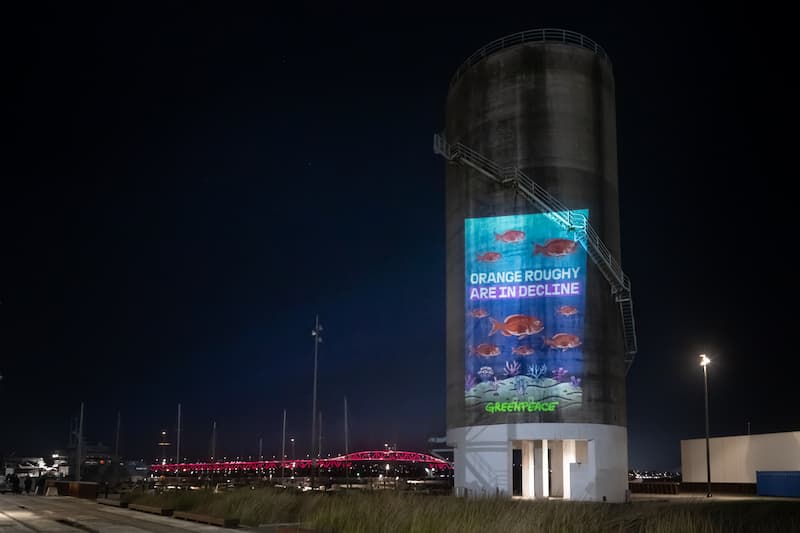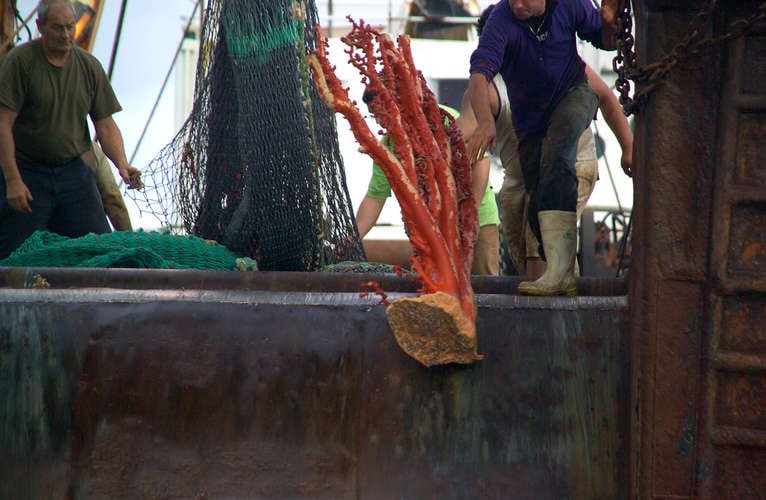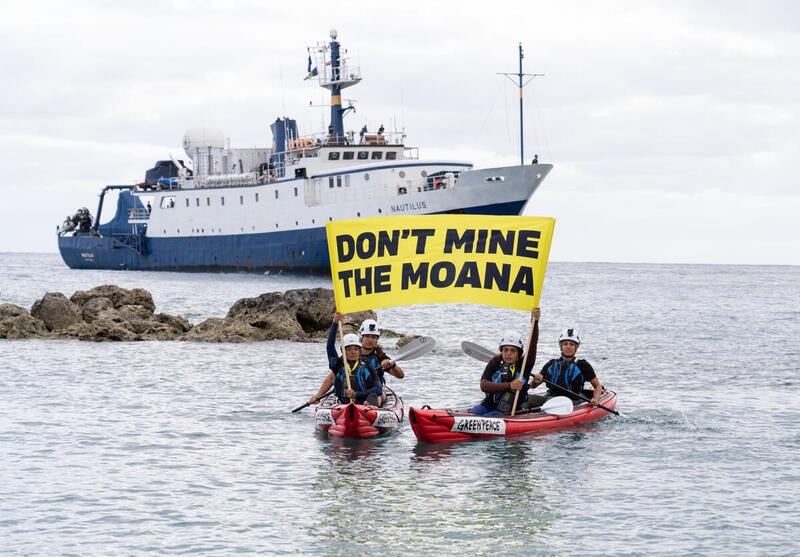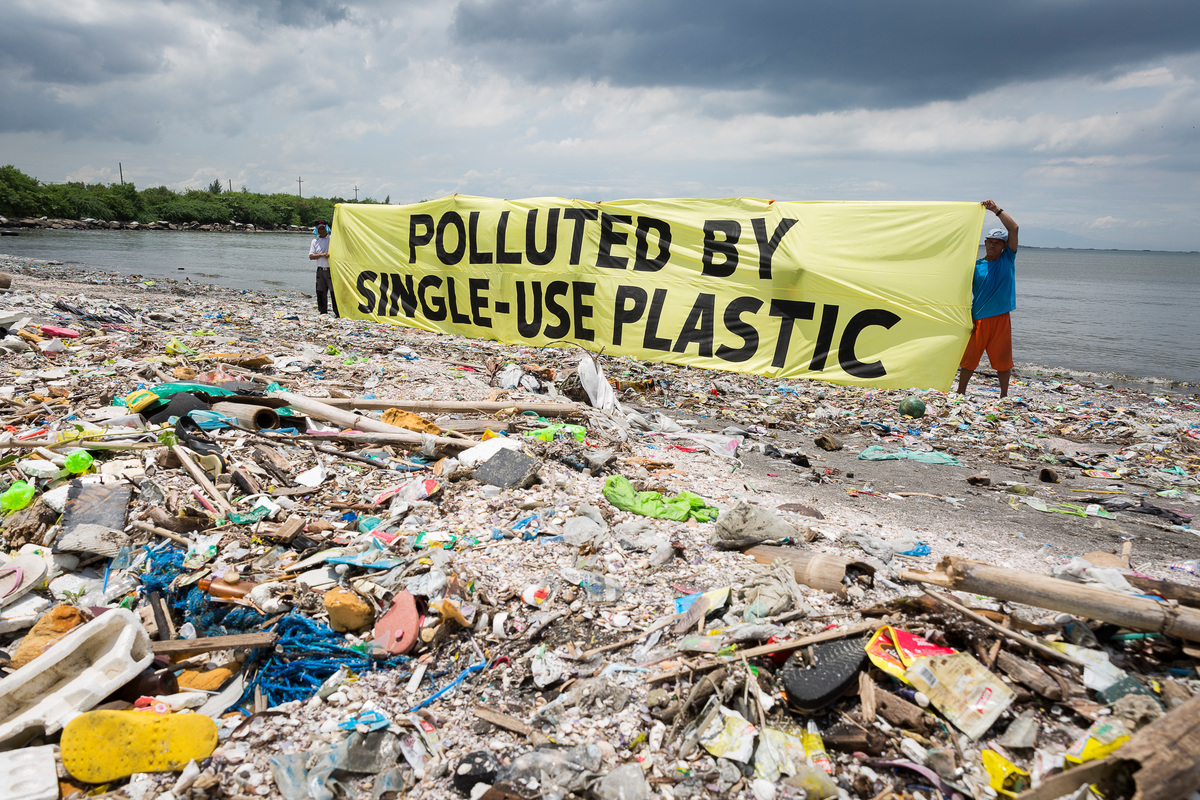Greenpeace is calling for New Zealand to stop bottom trawling on seamounts in the South Pacific high seas, projecting disappearing fish and destroyed coral onto a silo on Auckland’s waterfront to illustrate the destruction caused by the fishing method.
Greenpeace says they are highlighting New Zealand’s backward position on bottom trawling as the South Pacific Regional Fisheries Management Organisation (SPRFMO) meets to discuss fisheries science in Lima, Peru this week.
Recent stock assessments of orange roughy on the Challenger Plateau, west of Aotearoa, where the New Zealand fleet trawls, shows that the deep sea fish are struggling, with the most recent survey data indicating the population could be down to 16% of its original abundance*.
Even the most optimistic modelling puts the stock at 35% of “unfished biomass”, which is below the level we’ve agreed to internationally.** Yet despite relying on decade-old data, the New Zealand government has focused on this most optimistic estimate of orange roughy stock in the papers it has presented to SPRFMO.
“Backed by a pro fishing industry Minister in Shane Jones, New Zealand is misrepresenting how bad things are on the international stage, all in a bid to keep trawling vulnerable habitats like seamounts on the high seas,” says Greenpeace Aotearoa ocean campaigner Juan Parada.

“Orange roughy are in a dire state, with the latest assessment clearly showing the population is in decline. This is a population that has been fished to collapse before, resulting in a decade-long closure of the fishery.
“We know that bottom trawling bulldozes the very habitats that these deep water fish depend on while also destroying amazing coral communities found on seamounts.
“Smashing corals and other deep-sea life, in a bid to trawl up schools of orange roughy that have gathered to reproduce, is a reckless way to fish. Frankly, it’s shameful that New Zealand is the only country still bottom trawling seamounts in the South Pacific high seas.
“If we want the ocean to recover and fish like orange roughy to thrive, New Zealand must stop trawling on seamounts.”

Stock surveys of orange roughy on the Chatham Rise last year revealed orange roughy had disappeared from some of their usual spawning grounds. For one sub-stock, the only place where breeding fish are still found is a seamount closed to trawling – further evidence that the fish species is in trouble and that banning trawling on seamounts is key to its recovery.***
The Marine Sustainability Certification (MSC) tick was suspended for the majority of this fishery in November last year.
Greenpeace also points out that New Zealand actively blocked measures that would have protected more vulnerable marine areas in the South Pacific at a SPRFMO meeting earlier this year, backtracking on previous commitments and falling out of step with other countries that supported the protection measures.
Notes:
*See Table 6 row “All6 – TACC” page 964 of the 2024 plenary report volume 2.
** Under the South Pacific Regional Fisheries Management Organisation (SPRFMO) Conservation and Management Measure CMM 03a-2023, which specifies that this Tasman Sea stock will be managed at or above 40% of its original biomass for the next five years.
*** Fisheries NZ Review of sustainability measures for orange roughy 2023/24
The papers NZ submitted to SPRMO available here

Join the call to demand that the NZ Govt bans bottom trawling on seamounts and similar deep sea features, and stop issuing permits for bottom trawling in international waters.
Take Action


